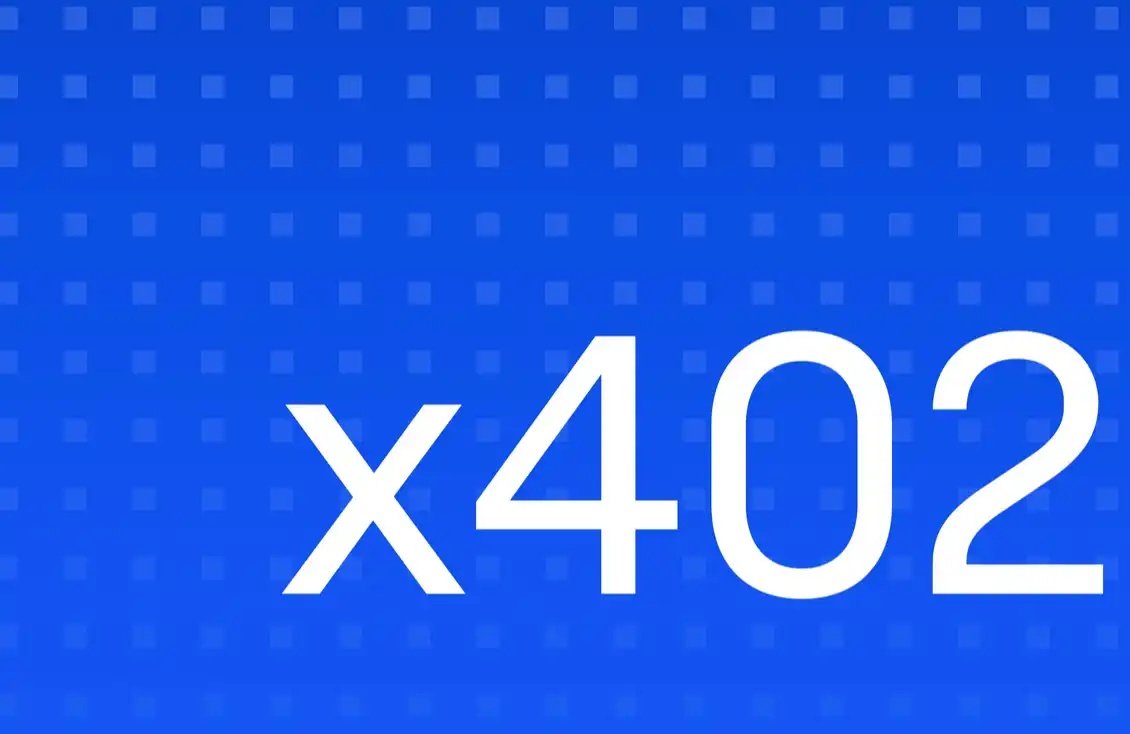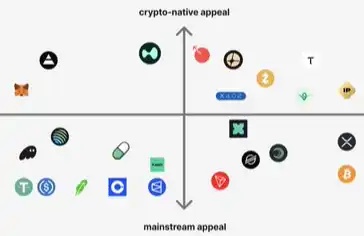DAOrayaki: Induction of DAO governance processes through computer-aided
Original title: "Mapping the Computer-Aided Governance Process"
Original author: DC
Original compilation: xinyang@DAOrayaki.org

This is a framework for participatory decision-making
For a DAO composed of a series of algorithms, computing governance is a trend that cannot be ignored. Therefore, the DAOrayaki community sorts out the DAO computing governance process. This overview aims to gain a more intuitive understanding of the map and process (MAP) of computer-aided governance (CAG) by providing a higher-level perspective. As computer-aided governance is an evolving field, CAG MAP is also an ongoing effort.

Motivation
Computer Aided Governance Maps and Processes (CAG MAP) explores how we use computers to better understand and navigate complex systems. Specifically, it unearths tools and techniques for humans to draft and analyze governance proposals. It does not make assumptions about a system's dynamics or governance mechanisms. However, it does assume that those who draft and analyze proposals are speaking for their interests.
This is important because a system with different stakeholders means more diversity of views and means that there is no "best" objective view . It's all relative.
If so, how was the decision made? This is actually a political process of compromise. Several requirements need to be met:
First, stakeholders need to be able to participate in the political process. This could look like direct voting, delegation, or anything else - stakeholders need to have a meaningful voice to effect change within the system (not just exit or loyalty).
Second, you must be guided by basic facts. . This is the data part of data-driven decision making. We may have different interpretations of the data, but there needs to be a source of data that we can all agree on.
Third, assumptions that are shared among stakeholders as subjective realities, while not objective realities, also need to be explicitly stated. This allows stakeholders to agree on the strategy (mission/vision) even if they disagree on the tactics (specific steps to achieve the goal).
If these things don't exist, then your first step is to figure them out. Without a fundamental foundation of governance, nothing else will work. However, if these requirements are met, then this CAG MAP may help stakeholders (such as you) participate in data-driven decision-making. The key word here is "possible". CAG MAP is an ongoing research project, so there may be deviations from your requirements.
It is worth noting that assistance is a key word in computer-aided governance. This describes the augmentation of human decision-making processes by computers and data, rather than governance by computers or algorithms. It's akin to air traffic controllers making critical decisions with the help of data-driven tools at their fingertips.
CAG Process
The map and process of Computer Aided Governance is divided into eight recursive parts:
Observation: A system in a state of nature, its stocks and flows
Ask questions: who, what/if, when, where, Why? (who, what/what if, when, where, why?)
Map: draw pictures representing interconnections
Model: use code to conduct thought experiments
Present: Share your ideas with your community
Debate: Apply critical thinking collectively
Execute: Make decisions and take action
Monitor : Record learning results
Then repeat the process: feedback leads to new questions, new suggestions emerge, etc.
Remember, this is just a map, not the whole world. The purpose of this overview is to provide some intuition about the concepts and tools. You should decide for yourself what works for you and how to apply it in the real world system you work on.
Observation

< /p>
In the context of a socio-economic system, the first step is to understand what is to be governed, and how. Even if it seems that "no governance" is a kind of governance, it is informal governance. As you explore, you'll find a lot of information. Some are true and some are false. Knowing the difference is key. Some common resources that can help you figure it out are white papers, documentation repositories, source code, maps/models, research reports, system data, and community chats. These resources all have perspectives on the system, but it's only when multiple perspectives are combined that you begin to understand what's really going on. When in doubt, go to the source of the data and build your thinking from first principles.
After doing some research, you start to understand how things work on a technical level and how people think they can/should/need on an emotional level How things work, and how people's actions (based on their perceptions and preferences) shape the fundamentals of the system in a reflexive loop. If incentives are aligned, there is a common knowledge base, and the power structure is transparent — then perhaps your community could benefit from using computer-aided governance to help make global and all-informed decisions. If any of the above is missing from a participatory community, beware: there are dragons in it. (Annotation: It may be dangerous or unknown)
Ask a question
 < /p>
< /p>
When you start to observe and explore a system, you may have some questions. Some of these unanswered questions may be those parts of the system that could be improved. If so, the next step is to figure out what the problem is and how to fix it. It's important to spend a lot of time on this, because solving a problem starts with asking it. You can't solve what you don't understand.
The most important thing is to have a clear, concise definition of the problem you are trying to solve. It should be obvious. If you don't know what you're doing, other things will be more difficult. Once you have a clear definition of the problem, you can discover similar problems. How similar problems have been solved and different implementation results may provide insights. This can then help you form a hypothesis of what might help with your problem.
There are several tools and techniques that can help you define your problem and identify possible solutions. The first is to write it down. Try to define the problem in one sentence and list things like the problem and their solutions. Then ask a friend and see what they say. Apply Socratic questioning to further explore the problem and your thinking around it. Then, once you have some good ideas, come up with a design rationale, explaining your thought process, the ideas incorporated, and why you think a particular solution might work well. Then, you'll have a clear problem definition and solution hypotheses to test.
Map

< /p>
Maps can help you communicate a lot of information quickly and visually. After all, a picture is worth a thousand words.
Maps do not represent things perfectly. It is something abstract that conveys the main idea. Can make it easier for your audience to quickly understand and remember what's going on. It can also show how your ideas fit with the rest of the system.
Maps don't need to be fancy, they just need to be clear. They should only include the most important stuff. This usually includes the components of a system, and the relationships between them. This might look like a simple sketch, stakeholder map, flowchart, functional block diagram, cause and effect loop diagram, stock and flow diagram, or even interactive media. Sometimes it's helpful to use different diagramming/plotting tools to help you understand aspects of the system - don't try to fit everything on one map! It is important to explain your system clearly and clearly state the idea you want to convey.
Model

< /p>
The model is like a thought experiment, but backed by computing power. It's kind of like something between a white paper and a working implementation. This is suitable if you want to test an idea before implementing it, or want to test variations of an idea.
When creating a model, the point is to help you explore an idea, but also help others understand it. Therefore, it needs to be readable. Both the assumptions on which the model rests and what the model specifically explores should be specified. This way, it is easier to A/B test the assumptions and parameters of the model.
There are many tools to create models. MatLab is popular, but relatively expensive. cadCAD is relatively new and open source. Some independent frameworks, such as tokenSPICE, started to model EVM testnets. There are also upcoming cadCAD services like BlockScience Labs that make it easier to automatically run models based on real-world data. Which one is best for you will depend on your situation. No matter what tool you choose, the model should be easy to read and run. This way people can participate and contribute to your work.
Display

< /p>
In socioeconomic systems, both political feasibility and incentive compatibility are important. To win the battle, data is only half the battle. What actions are prioritized depends not only on who can best define the goal (strategy) and the steps to get there (tactics), but also on who can best communicate it and keep the associated power around it Consistency, in other words, is politics. This is crucial in the context of computer-aided governance. If people don't understand what you're talking about, they can't contribute effectively. Less participation lowers the chances of your idea spreading, and the chances of your proposal passing. Make it easy for people to engage with your work by showing it. List references, clarify assumptions, and make your data and code available for inspection. A big factor in your success is making it easy for people to understand and engage with your proposal.
Once you have a proposal with a clear purpose and process, share your work. The implicit premise here is that you know who your audience is. You are not writing for yourself in a vacuum, you have an important message that is both interesting and informative. You know exactly who this is for and why they care so much about the topic. Your simple, structured message will resonate with them and inspire action in the same way that you were inspired to write your proposal. Is it right?
Yes, so there are many tools that can help you improve your writing for this purpose. Some focus on mechanics, others are more about overall construction. Both are good. Start by checking your spelling, grammar, and long sentences. Also, reading good articles helps a lot. Good writing is subjective, so it will depend on your personal preferences and, more importantly, your reader.
Debate

< /p>
A lot of ideas sound good in theory (like this CAG MAP!). But you won't know if they work until you test them. Sharing your ideas and getting feedback from the real world can help your ideas get better.
Good feedback requires critical thinking, and critical thinking means people criticize. Let's hope this energy is directed at your thoughts, but it could be directed at you as well. If you can sanely internalize the former and ignore the latter, your life will be good. If you can't, you'll be exhausted, or you'll die.
The arena in which these criticisms are expressed is called politics. In an enlightened society, this is how we debate ideas and adjudicate the preferences of different stakeholders. In most societies, it's how we fight for power. It's not because people are evil, it's because we are people. This is what we will do. Arming yourself with objective data, inter-subjective social agreements, and a proposal that expresses the interests of your stakeholder groups as well as the system as a whole (aka other stakeholders) is a good start. Then you have to fight for some feasible solutions.
Execution

< /p>
Decisions!
Action is necessary to create change. Once an idea has been debated and perfected, it needs to be enacted for implementation. Ideally, this process is seen as legitimate by the stakeholders of the system. If so, get involved in the process and express your preference. If the process isn't deemed legitimate, then find a new system to engage with, because without a legitimate governance process, you're living in a world of pure power ruled by 800lb gorillas.
In any given system, the exact mechanism used to make the decision will be unique. It is very important that you understand how they work so that you can participate effectively. It's up to you to figure this out on your own.
Also, be aware that making a formal decision does not mean it will create the outcome you want. You may have a theory about what might, should, or will happen -- but you don't know what's going to happen until you test it. Even when implemented, you often can't see clearly. For non-deterministic decisions with risk of execution, it may be difficult to say whether success or failure is caused by the execution of the decision or by the decision itself.
Monitoring

< /p>
Science doesn't work if we do experiments and don't bother to record the results. The same goes for governance. There needs to be a feedback loop between decisions and outcomes. Monitoring enables you to verify the outcomes of your decisions to see if they have had the desired effect.
If a proposal is successful, you'll want to see if it actually does what you expected it to do. If yes, great. If not, figure out why.
If a proposal doesn't pan out, that's okay too. If you have a hypothesis about what would happen if your proposal doesn't pass, then you can test that hypothesis. You can provide data to support your original proposal, which may lead you to resubmit a revised version with more evidence ("I said so!").
Monitoring complex systems can be a lot of work, and there are tools that can help. Some things can be automated, like feeding raw data to a recursive model, which then runs automatically and raises alerts based on key metrics - you might also want to read the community discussions for yourself to understand the dynamics and sentiment. Analyzing objective data and subjective social activity is important for understanding the big picture of a system. The absence of one of the two is likely to result in local rather than global optimization.

TL;DR: (too long to read version)
< p>CAG MAP is a data-driven political process. Its purpose is to help stakeholders understand, improve and maintain the systems they care about.
There are no indisputable public interests in a pluralistic society. It is up to stakeholders to defend their own interests. If interests align, things may go well, but If not, then things can be very difficult. Because there is a constant alignment of interests.
Critical thinking is required to create proposals that align with interests. Critical Thinking Criticality is required. CAG MAP can help you write, analyze, and comment on proposals using a data-driven process. It is not guaranteed to produce correct results, but it is guaranteed to be better than arguing with each other without solid data.
Good luck, the participatory governance system does not look simple!
The author is Burrrata, especially Thanks to Jeff Emmett, Jessica Zartler, Kelsie Nabben, Matt Stephenson, Dr.Michael Zargham, and everyone at BlockScience for their feedback and comments during the development of CAG MAP.
Also, thanks to Brian Douglas for creating the control theory map that inspired the CAG MAP.
Reference
< /p>
1. Workbook: https://github.com/BlockScience/cag-map
2. Exit or loyalty: https://en.wikipedia.org/wiki/Exit ,_Voice ,_and_Loyalty
3. Reflective cycle: https://www.georgesoros.com/2014/01/13/fallibility-reflexivity-and-the-human-uncertainty-principle-2/
4. Incentive mechanism: https://en.wikipedia.org/wiki/Incentive
5. Power: https://en.wikipedia.org/wiki/Power_( social _and_political)
6. There are dragons in it: https://en.wikipedia.org/wiki/Here_be_ dragons
7. How to solve it: https://en.wikipedia. org/wiki/How_to_Solve_It
8. Ask questions: https://fs.blog/2019/09/power-questions/
9. Solve: https://en .wikipedia.org/wiki/Problem_solving
10. Definition: https://en.wikipedia.org/wiki/Problem_statement
11. Assumption: https://en. wikipedia.org/wiki/Hypothesis
12. Socratic questioning: https://en.wikipedia.org/wiki/Socratic_questioning
13. Design reason: https: //en.wikipedia.org/wiki/Design_ rationale
14. Sketch: https://en.wikipedia.org/wiki/Sketch_(drawing)
15. Stakeholders Stakeholder Map: https://en.wikipedia.org/wiki/Stakeholder_analysis#Stakeholder_mapping
16. Flowchart: https://en.wikipedia.org/wiki/Flowchart
17. Functional block diagram: https://en.wikipedia.org/wiki/Functional_ block_diagram
18. Causal loop diagram: https://en.wikipedia.org/wiki/Causal_loop_diagram
19. Stock and flow graph: https://en.wikipedia.org/wiki/Stock_and_flow
20. Interactive media: https://distill.pub/2020/communicating-with- interactive-articles/
23. Model: https://en.wikipedia.org/wiki/Modeling_and_ simulation
24. Thought experiment: https://en.wikipedia. org/wiki/Thought _experiment
25.A/B Testing: https://en.wikipedia.org/wiki/A/B_testing
26.MatLab: https:// www.mathworks.com/products/matlab.html
27. cadCAD: https://cadcad.org/
28. tokenSPICE: https://github.com/oceanprotocol /tokenspice
29. BlockScience Labs: https://blocksciencelabs.com/
30. Political Feasibility: https://en.wikipedia.org/wiki/Political_ feasibility_analysis< /p>
31. Incentive compatibility: https://en.wikipedia.org/wiki/Incentive _compatibility
32. Strategy: https://en.wikipedia.org/wiki/ Strategy
33. Tactics: https://en.wikipedia.org/wiki/Tactic_(method)
34. Power : https://en.wikipedia.org /wiki/Power_(social_and_political)
35. Politics: https://en.wikipedia.org/wiki/Politics
36. You know who your audience is: https://en.wikipedia.org/wiki/Politics
36. ://seths.blog/2017/07/in-search-of-the-minimum-viable-audience/
37. Grammarly: https://www.grammarly.com/
38. Long sentences: https://hemingwayapp.com/
39. Critical thinking: https://en.wikipedia.org/wiki/Critical_thinking
40. Politics: http://character
41. Science: https://en.wikipedia.org/wiki/Science
42. Feedback Loop: https://en .wikipedia.org/wiki/Feedback
43. Partial rather than overall optimization: https://en.wikipedia.org/wiki/Maxima_and_minima
44. https: //www.youtube.com/watch?v=xQuuQvEDwkY
Original link
Welcome to join the official BlockBeats community:
Telegram Subscription Group: https://t.me/theblockbeats
Telegram Discussion Group: https://t.me/BlockBeats_App
Official Twitter Account: https://twitter.com/BlockBeatsAsia


 Forum
Forum Finance
Finance
 Specials
Specials
 On-chain Eco
On-chain Eco
 Entry
Entry
 Podcasts
Podcasts
 Activities
Activities
 OPRR
OPRR








